It’s typically a bit cliché to describe a movie as a “labor of love” for its filmmaker, but that really is the case for Slash/Back director Nyla Innuksuk and her story of teenage girls in a remote Arctic community battling an alien invader.
Set and shot in the Inuit hamlet of Pangnirtung in Nunavut, Canada, Slash/Back features a cast almost entirely composed of local residents — including its teenage (and preteen) stars — with the community they live in serving as the focal point of the film’s fictional invasion by terrifying, tentacled creatures who wear their victims’ skins. Innuksuk, who grew up in the Inuit hamlet of Igloolik, shot the film in “Pang” (as it is informally known) with a crew of 50 people in 2019, determined to showcase the beauty of the people, place, and culture of the Arctic region.
With the film now enjoying a limited theatrical release and overwhelmingly positive reviews, Innuksuk spoke to Digital Trends about the experience of not only making Slash/Back, but making it the way she always knew the film should be made.
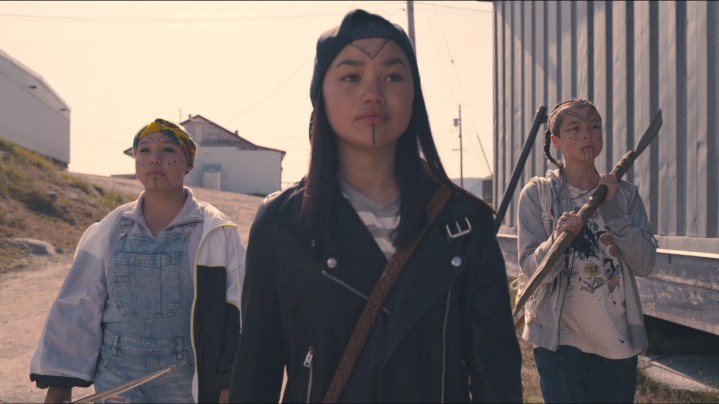
Digital Trends: This film is clearly a very personal project for you, well beyond it being your feature directorial debut. What’s it like to finally have it out there and see the warm reception it’s received?
Nyla Innuksuk: It’s amazing. I love these girls and [actor] Rory [Anawak]. I was just thinking about how it’s been years of us working together and seeing them grow up with this movie. It’s been really special. Nalajoss [Ellsworth] was seven or eight years old and the other girls were 11 or 12 when we shot the proof of concept for the film. The project started with me and the cast, and then we found our producers, and then everyone else in our crew, to help us make it. We started with just this idea and this belief that we could make it happen.
How did you put together the cast?
When I was shooting the proof of concept for it, I knew the process of casting was going to be a little bit different. There aren’t casting agents in Iqaluit or in Nunavut, so having formal auditions didn’t feel like it would make a lot of sense. So we held these acting workshops for young women, and just invited kids to come and take part in these acting workshops. In that process, I could try different girls in different partnerships, and then we shot the proof of concept. That’s how we got the project rolling.
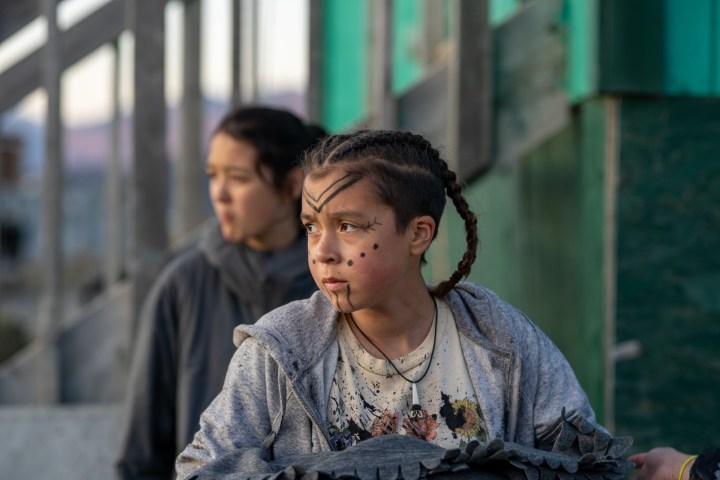
Their characters really feel like extensions of the kids themselves with the way they talk and interact. How did that aspect of the characters evolve?
Once it came to developing the script, I was traveling up to Nunavut and going out with the girls on boats and going to cabins and watching scary movies with them. We were building a relationship, and the ways they spoke, the kinds of language they used — in particular the language they used around their indigeneity — we had lots of conversations about all of those things, and about what it means to be proud of where you come from.
These characters go on a journey in which they realize their town is worth fighting for and that they’re uniquely capable of taking on that threat, and [in making the film] we saw these girls who have wrestled with shame in their indigeneity becoming so proud of the movie and sharing it with the audiences in Spain or in Texas. They ask me to to talk to the audiences in Inuktitut, knowing that people won’t understand what I’m saying, but it’s important for them to be speaking in their language.
These are things that they wouldn’t have necessarily said a few years ago, so to see the way that they’ve kind of grown up with the movie has been such an amazing experience for me.
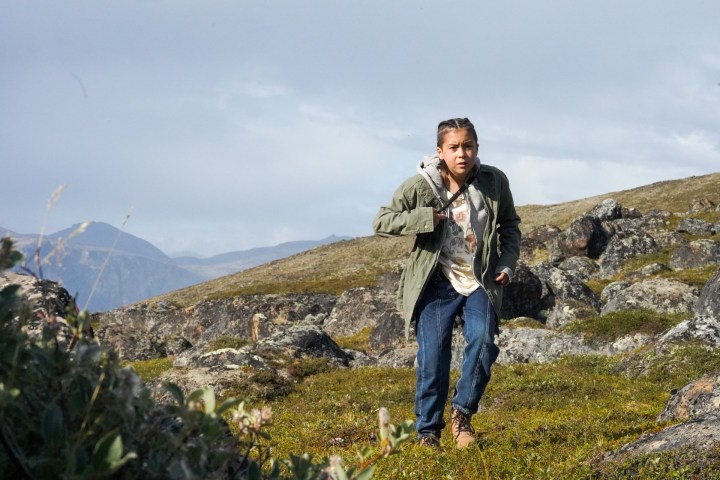
The location of the film plays such a big part in the story. How did Pang shape the film? And why was it important to place the story there both in the film and in the real world?
It’s such a beautiful place — one of the most beautiful places I’ve ever been. It’s different than the rest of the Arctic, too. My home community is called Igloolik. It’s an island that’s beautiful and so sunny, but it’s very flat. I went to Pang to film a documentary when I was in college about this tradition of square dancing that exists in the community. It was brought in by the the Scottish whalers in the 1800s and is now considered to be part of Inuit tradition with its accordion music and square dances.
Is that the dancing we see in the film?
Yes! Exactly! So I had fallen in love with this place and these stunning mountains and this community nestled in the middle of these gigantic fjords. And then my brother fell in love with a girl from there, so now my nephews are from the community of Pang, too. For me to be able to make an alien invasion movie that was set in their hometown was such a special treat for me.
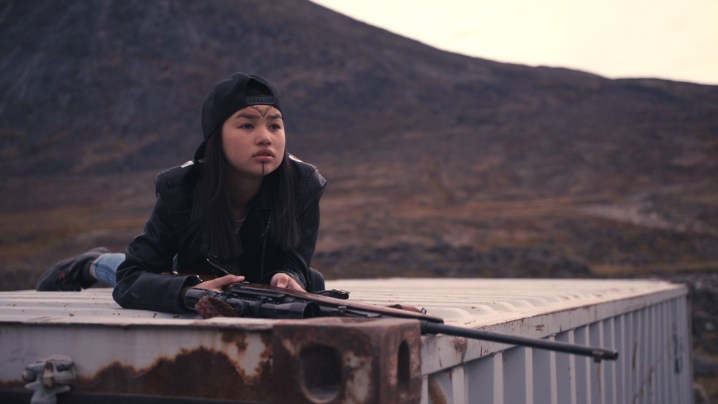
How did you settle on the look of the alien creatures?
That was a fun process. It started with the script, and with my co-writer and I trying to figure out the creatures. We settled on creatures that are made up of tentacles that take over animals and use their skins as disguises, but how do we create that movement when someone has been taken over, and it’s just skin filled with tentacles? Lucky for us, there was this amazing contortionist in Toronto, Troy James, who’s incredible. He can bend himself over backwards and just do the craziest things. So for our actors whose characters get turned into aliens, we made these skin suits that Troy would wear.
At one point, we actually built this full, huge bear costume for Troy to wear upside down. He could only wear it when he was walking upside-down, and it was really challenging for him and very hot and sweaty, and we made him film for a whole day running down a hill. And then we didn’t use any of it.
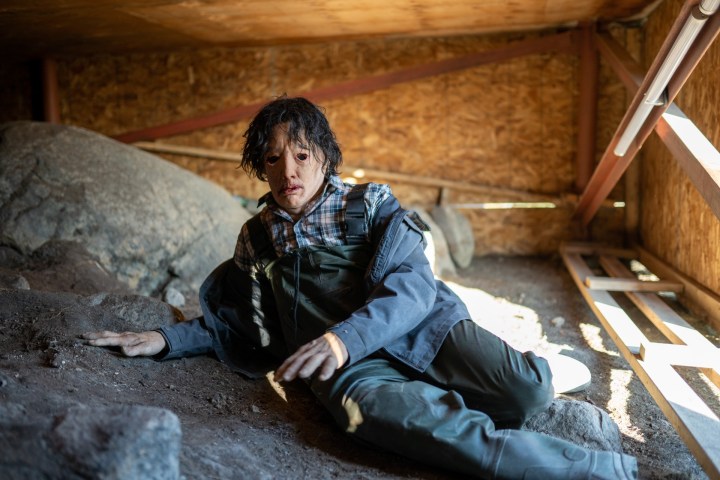
Oh no!
Yeah, we used a couple of frames and used his body movements as reference, because I love the look of practical effects and the movie The Thing with its great practical effects, but the movement of the bear [with Troy in costume] looked a little too weird and campy. So we changed it to a CG bear influenced by Troy’s original movements. After all of that and the edit was done, we got to move into the CG space, and we got to work with a whole new group of nerds to figure out the tentacles and all. That was a new kind of fun, too.
How about the title of the film? Where did it come from?
You really want to know? OK, so I hate writing titles. When I would write essays, I would always save it until the end. And that’s what happened with Slash/Back when I had to pitch it at a certain point, too. For me, the Slash/Back title felt a little retro, and came from the idea of these girls fighting back. If someone comes after them, they were going to attack back.
But as the creatures evolved, they eventually had these slicers that would cut you before they would suck your blood. So at that point — which was late in the prep process — I got really excited, because it was like, “Hey, it’s Slash/Back! Like, they slash and then the girls slash back!” Finally, the title made sense!

The score for the film was amazing, and sent me down a rabbit hole learning about Inuit throat singing — particularly the version of Mamaqtuq by Nancy Mike that plays over the end credits. What went into setting up the music in the film?
Nancy Mike is incredible. She’s an amazing throat singer and performer in Nunavut. She was part of a group called The Jerry Cans and they did some really, really cool music together. I knew I wanted to include Northern artists and Inuit musicians in the film, so whenever there’s music playing in the background at a party or something, it’s often an Inuk artist. Tanya Tagaq is an amazing throat singer and provided us with hundreds of hours of these crazy vocalizations that the DJs from Halluci Nation — formerly called The Tribe Called Red — used whenever you saw an alien come into a scene. There would be these weird vocalizations that would be a part of those scenes.
Halluci Nation, the electronic DJs, were friends of mine. I’d worked on an interactive virtual reality music video with them as Tribe Called Red before, so when I was making a movie, they kept suggesting we should do something together. Eventually, I was like, “Are you guys asking to do the score for my movie? Because if you are, then the answer will always be yes!” They came on before we even had a script.
We were also able to bring on this amazing composer, Michael [Brook], to do some additional composing. It was such a great team. And with Nancy, she sent over a version of Mamaqtuq, and the DJs at Halluci Nation remixed a version of it for the credits. A lot of work on the film was collaborative stuff between people that hadn’t worked together before, but it worked really well.
Director Nyla Innuksuk’s Slash/Back is available in limited release in theaters and via on-demand streaming now.
Editors' Recommendations
- Foe director Garth Davis on making the most devastating sci-fi movie ever
- The Magic Flute director Florian Sigl on making a Harry Potter-esque fantasy
- Wreck’s creator on making a campy horror series with a killer duck (yes, really)
- Joe Begos makes the yuletide bloody again with Christmas Bloody Christmas
- Billy Fox on editing Devotion’s action scenes and finding the heartbeat of a film






